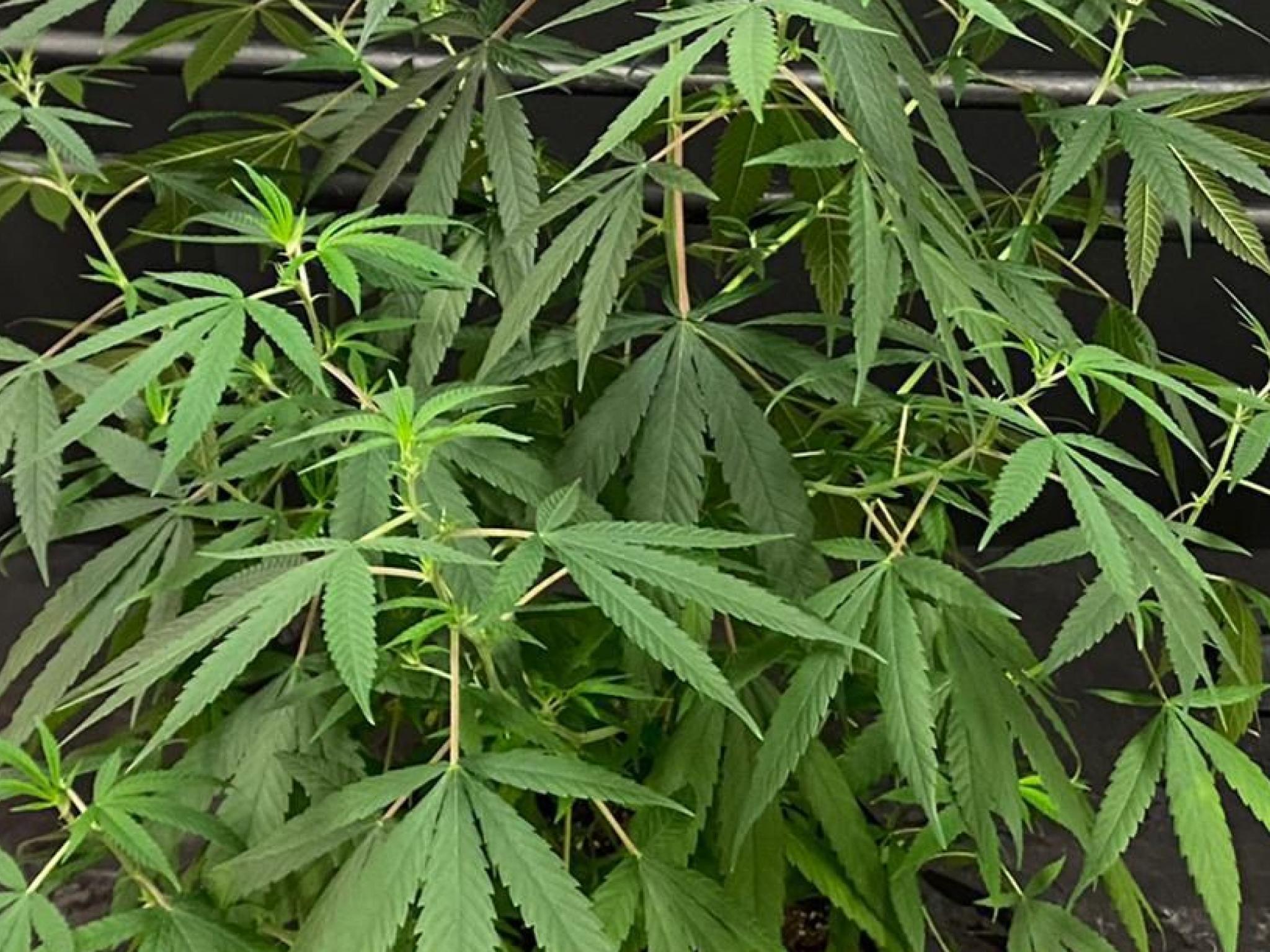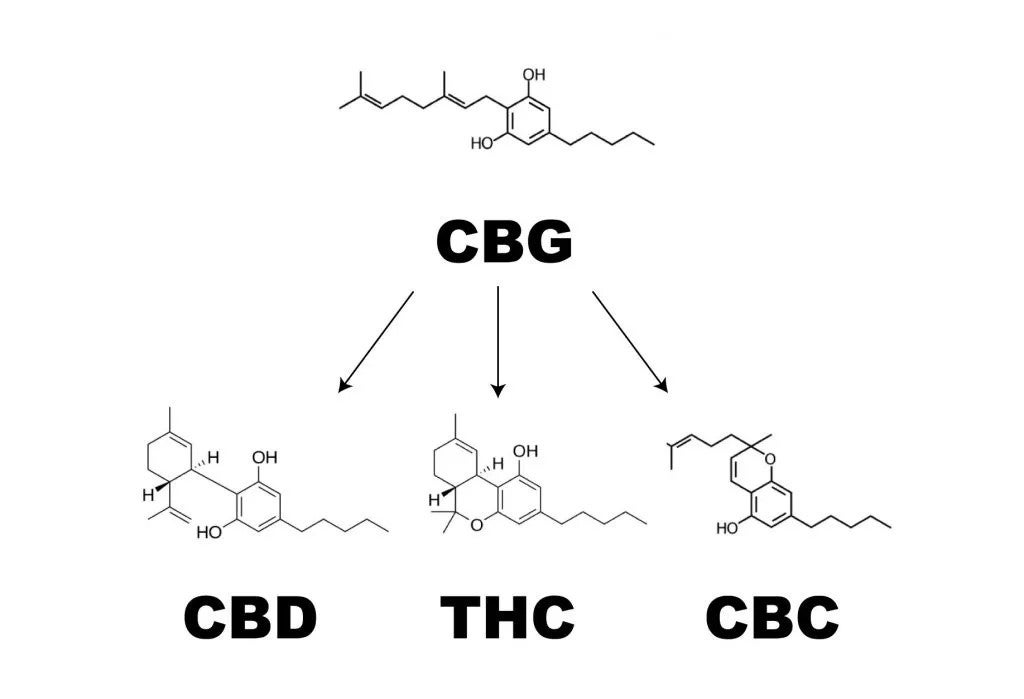
Is it possible to bioengineer cannabis to either eliminate THC production completely or increase it to higher levels?
One biotech company from Fort Wayne, Indiana, has found a way to do just that.
After previous success, Growing Together Research Inc. (GTR), is broadening its research and product development capabilities to alter the expression of THC in cannabis Sativa.
Earlier this year, the company confirmed it had achieved the first known stable transformation and regeneration of multiple THC-hemp cultivars via its partnership with Texas A&M AgriLife Research. The results revealed validated gene edits that are expected to eliminate or nearly eliminate the production of THC and cannabichromene, as well as boost the expression of cannabidiol (CBD).
Hemp Farming Will Benefit
These modified cultivars are expected to reach the market in the fourth quarter of 2022. The main goal behind the transformations is to help hemp farmers manage the risk of their crop going “hot,” that is containing more than 0.3% of THC, a problem that can cause them legal repercussions, including having their crop destroyed.
Same Techniques Can Boost THC
Relying on the demonstrated ability to turn down gene coding for THC expression, GTR is applying the same techniques to turn THC expression up. The company has teamed up with Canada-based academic and commercial partners to create cannabis cultivars with much higher levels of THC. The first batch of high THC cultivars is expected by the third quarter of 2023.
Benzinga wanted to learn more so we reached out to GTR's founder and CEO Samuel E. Proctor, the company's COO Dimitri Samaratunga and Nick Ainslie, MSc, VP of business development.
“We expect the THC silenced hemp plant to have zero or near-zero percentage values of THC,” Samaratunga told Benzinga.
The scientific ability to adjust THC expression up and down is referred to as the “Delta-9 Dial” and represents a considerable leap forward in the stable gene editing of the cannabis plant.
Benzinga asked if this is a proprietary process.
“Yes, GTR uses proprietary, patent-pending biotechnology and processes when working with partners to help them achieve commercial goals with respect to their cultivars,” Proctor confirmed.
What Happens With CBD When There Is Zero THC?
“Let’s briefly outline the pathway that creates THC, which will help illustrate the other changes associated with its modulation,” Ainslie told Benzinga. “The precursor to this process is CBGA (Cannabigerolic Acid), which feeds three separate pathways: CBC, CBD, and THC. One can imagine if we have a fixed amount of CBGA and some of these pathways were 'turned off,' the remaining pathways would be fed the excess CBGA, resulting in higher outputs of their pathway’s products. We expect significant increases of expression of CBD as a result of silencing the THC pathway.”

This made us wonder if the same is applicable for when THC levels are boosted, or in other words - when THC expression is increased, will CBD levels be lowered?
"That is correct," Ainslie replied. "For our enhanced Delta9-THC projects we are starting with very high CBD/CBC strains to effectuate this result. Although since we are breaking new ground, the high Delta9-THC answer goes with what we have seen with the silenced Delta9-THC project."
Not A “Franken-Organism”
Benzinga wondered if this gene editing falls under the GMO concept and if so, would this affect the overall interest in its results?
“The term 'GMO' has become a catch-all 'boogeyman' for even the most benign of changes to an organism,” Samaratunga said. “In general, we think significant concern around 'GMOs' stems from a fear of unnaturally shuffling genes between different organisms/species to create a 'Franken-organism', and we are not doing anything remotely like this. Instead, we are introducing a gene construct that blocks the production of a single enzyme involved in a single branch of the cannabinoid biosynthetic pathway. There are no foreign genes added from other organisms."
Proctor explained that even though GTR does not directly sell or distribute plants or seeds, the company teams up with producers, they “don’t expect our consumers to be averse to transformed cannabis and hemp. Consumers understand that the most important factors are that products are pesticide-, petrochemical- and heavy-metal free, as well as adhering to organic farming practices, can deliver high quality, and uniform products to the market. “
Samaratunga further highlighted that there are also transformed organisms that are safer than traditional breeding in which one can introduce unintended traits into the organism along with the desired trait.
“Biotechnology is currently being used to drive healthier diets by boosting nutritional content in foods, broadening and improving the variety of fruits and vegetables available in grocery stores by making fragile, tastier, and more expensive heirloom varieties hardier, more efficient and cheaper to cultivate,” he said, adding that biotechnologies can also help the environment by minimizing the usage of harmful chemical pesticides and herbicides and reducing deforestation via more efficient agricultural productivity.
Goals And Motives
“We are motivated by a strong desire to bring cutting-edge biotechnology to the cannabis and hemp space,” Proctor said. “From the beginning, we saw a significant indication of demand for 0.0% THC varieties of industrial and high-cannabinoid hemp, as it clearly solves problems, e.g., the risk to cultivators of their crops going hot.”
Samaratunga added that they were interested in researching the hemp organism for three reasons: 1) Enormous medical potential in hemp that has 100 known cannabinoids that act on the human endocannabinoid system; 2) Insufficiently researched and poorly understood hemp genome, and 3) Massive market demand for a legally compliant plant with less than 0.3% THC and high CBD content.
Aren’t THC Levels Already High Enough?
Several studies have shown that cannabis is much more potent than it was decades ago in terms of its THC levels. Therefore what is the motive behind further increasing THC levels?
Ainslie said that there are two reasons for this – 1) To provide producers who extract THC and other cannabinoids a more concentrated starting product, hence, increasing their overall efficiency and decreasing waste biomass, and 2) To tailor strains for medicinal purposes in that THC is one of the important therapeutic compounds in the plant.
“For example, in order to intake the same amount of cannabinoids from a given amount of flower, a patient may only need to consume half that amount of flower if the new flower is twice as potent in cannabinoid content,” Ainslie explained.
Recent Similar Achievements
The need for higher THC content is definitely there, as GTR is not the only one making efforts toward the goal. Recent similar efforts in this area have been undertaken by researchers at the lab of Prof. Alexander (Sasha) Vainstein at Hebrew University in Rehovot, Israel where they recently confirmed to have engineered medical marijuana strains containing 20% more THC.
Researchers at the Robert H. Smith Faculty of Agriculture, Food and Environment Dept. enhanced the amounts of THC by nearly 17%, CBG (cannabigerol) levels by almost 25%, and terpenes by 20% to 30%.
The scientists accomplished this by manipulating a plant-based virus that had first been neutralized so that it would not harm the plant and then manipulating it to express the genes that influence the production of active substances in the cannabis plant.
Photo: Courtesy of GTR







